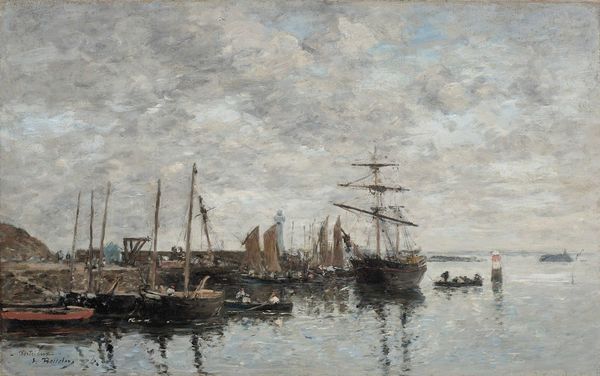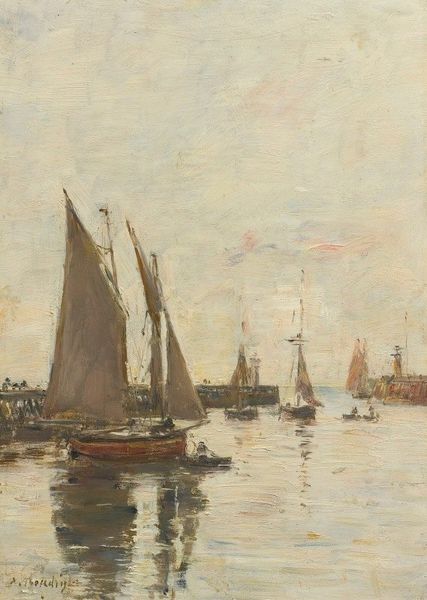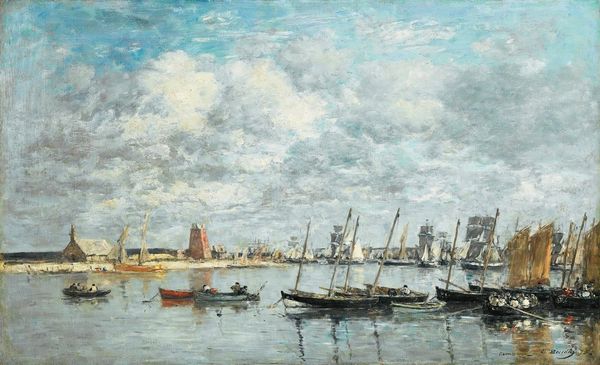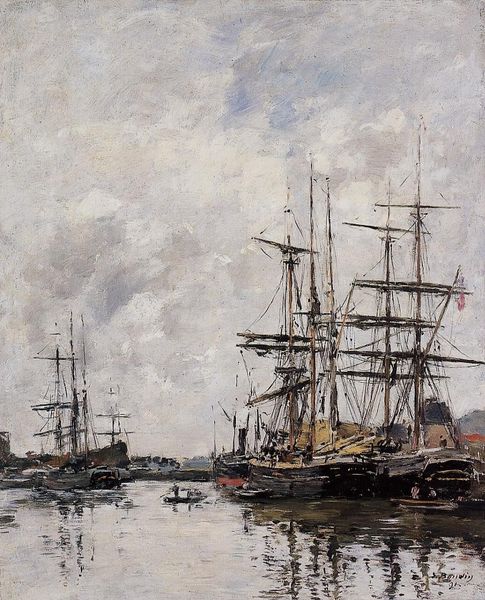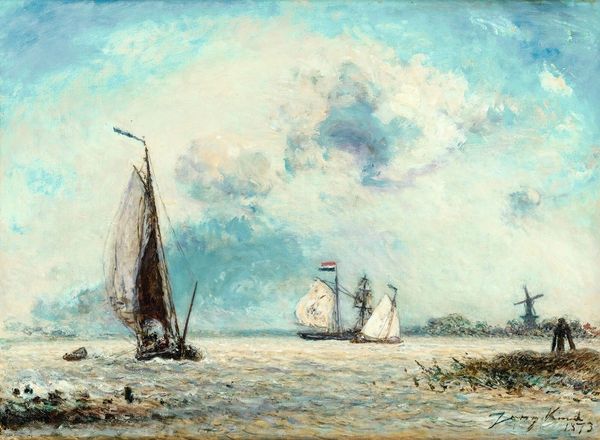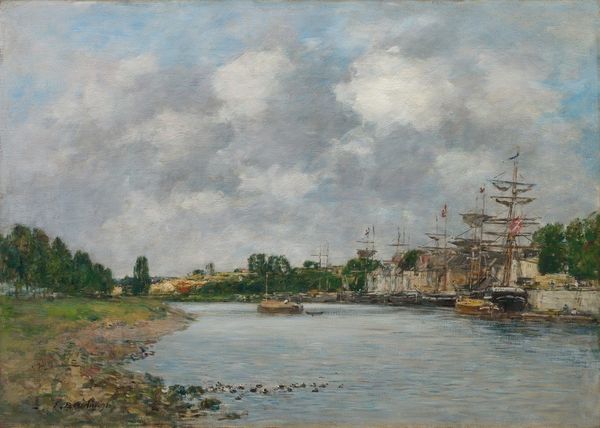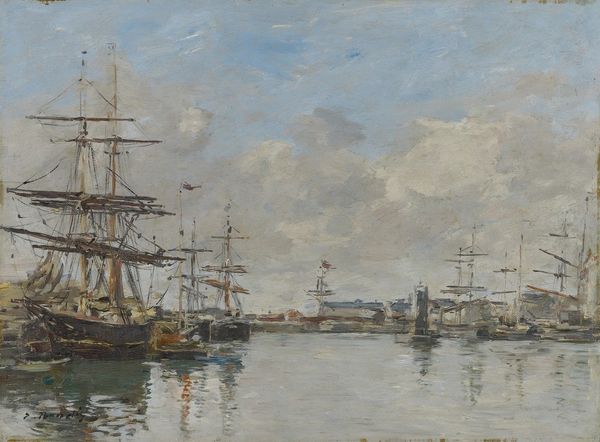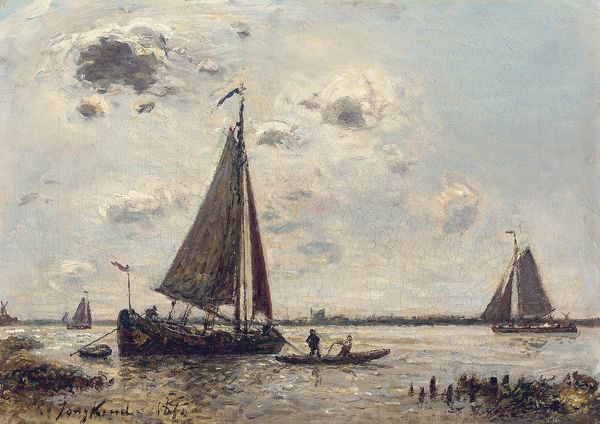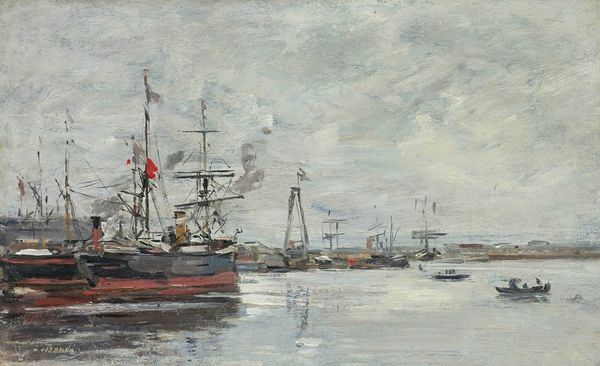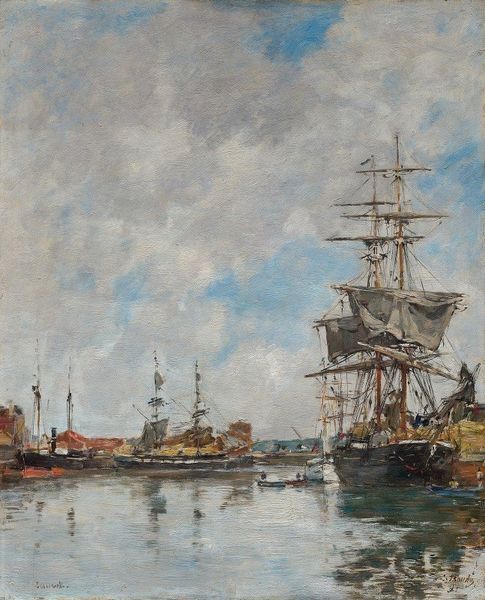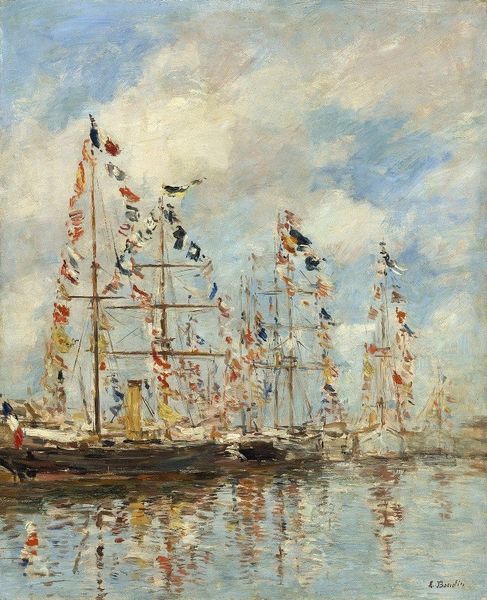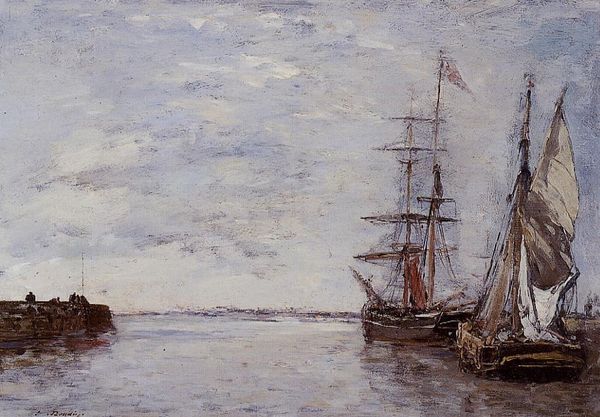
Copyright: Public Domain: Artvee
Editor: Here we have Eugène Boudin’s "Fishing Boats at Kerhor," painted in 1872. I find the subdued palette quite striking. It's like the entire scene is holding its breath before a storm. What catches your eye in this piece? Curator: It's a beautiful example of how skies and seas are never just… skies and seas. Boudin masterfully captures a very specific emotional atmosphere. Notice how the reflections of the boats in the water almost create a mirror, doubling the imagery. What does that mirroring suggest to you? Is it simply aesthetic, or something more? Editor: Hmm, it’s almost like a meditation, a doubling of experience, or even uncertainty. The real and the reflected become indistinguishable. Is it characteristic of the period to include such psychological depth within seascapes? Curator: Absolutely. Consider the Romantic movement's obsession with the sublime, with nature's power to both inspire and terrify. Boudin sits in a fascinating place, bridging Romanticism and the emerging Impressionism. Notice how the symbols of progress—the larger sailing vessels further out—are balanced with the more humble, older fishing boats closer to shore. Editor: So it’s a commentary on changing times? Curator: Possibly. Or perhaps a meditation on continuity. Even amidst change, certain things—like the essential act of fishing, the relationship between people and the sea—endure. Do the earthy colours of the fishing boats remind you of anything? Editor: I see! A visual anchor to the land, connecting the maritime activity back to the everyday lives of the people on shore. Curator: Precisely. Art unlocks so much with mindful consideration. Boudin’s image subtly blends social history, cultural memory, and the artist’s internal experience of the world. Editor: This has changed how I see Boudin's work. I'm going to pay more attention to symbolism moving forward.
Comments
No comments
Be the first to comment and join the conversation on the ultimate creative platform.
